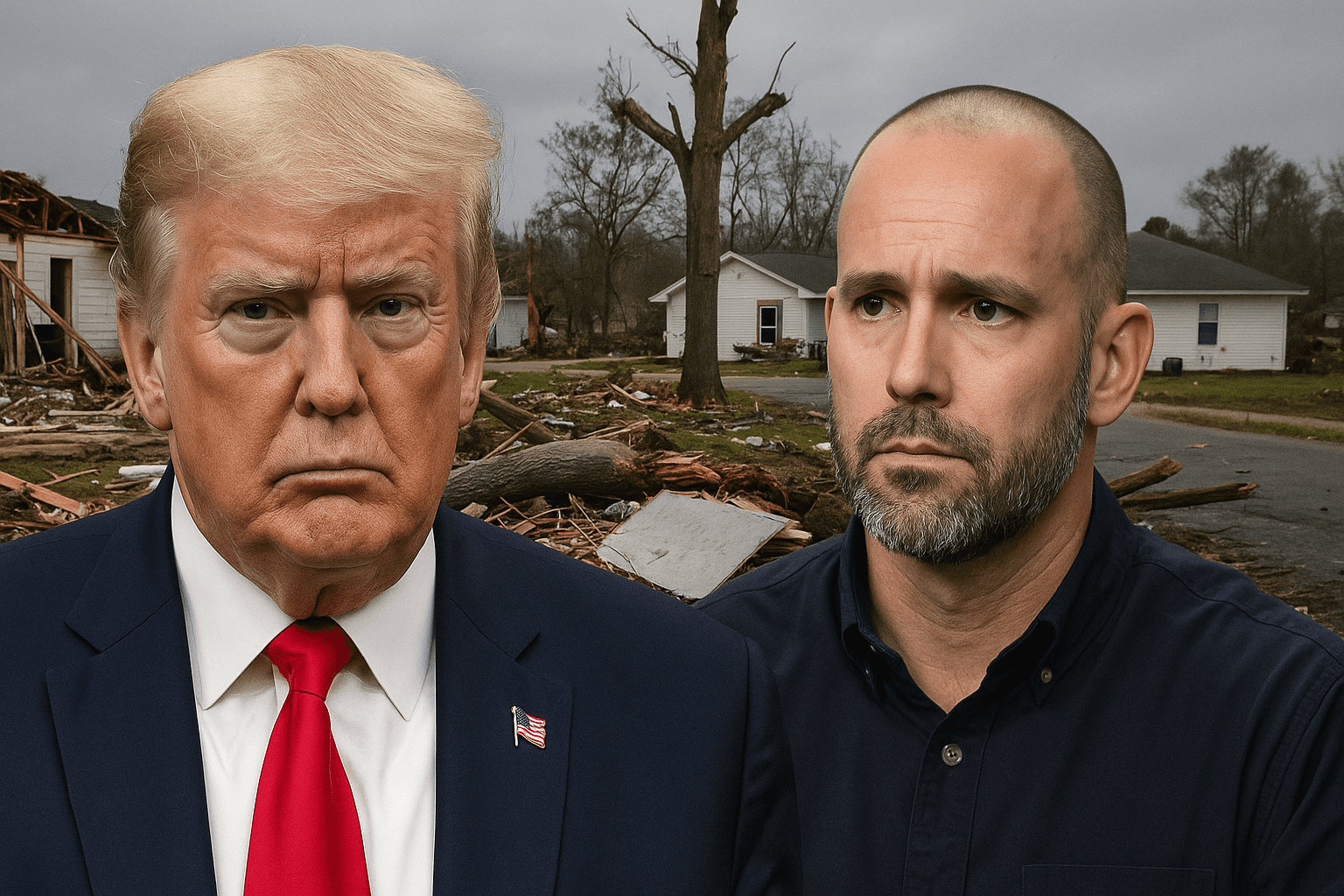President Trump’s administration made waves this week by abruptly removing Cameron Hamilton—the very man they had handpicked to dismantle FEMA—after he publicly defended the agency’s purpose. The dismissal comes as the administration doubles down on efforts to reduce federal oversight in emergencies and shift responsibility to the states.
Hamilton, a former Navy SEAL and conservative congressional hopeful from North Carolina, had seemed like a natural fit when Trump appointed him in January. The president praised him at the time as “a real leader who gets things done and won’t get bogged down in red tape.”
But just four months into the job, Hamilton was shown the door. His mistake? Speaking up for FEMA.
At a hearing on Capitol Hill earlier this week, Hamilton told lawmakers, “I do not believe it is in the best interest of the American people to eliminate the Federal Emergency Management Agency. It plays a vital coordinating role.” He went on to outline how FEMA’s national infrastructure helps states during catastrophic events.
That comment didn’t sit well with officials pushing the administration’s plan to wind down FEMA in favor of what they call a “more localized, state-first response model.” Within 24 hours, Homeland Security Secretary Kristi Noem announced Hamilton’s dismissal and named DHS insider David Richardson as his replacement. Richardson has no background in emergency management but is described as a “loyal implementer” of the administration’s vision.
President Trump has long made his views clear—favoring state control over federal programs and seeing FEMA as an obstacle rather than a necessity. It echoes earlier moments in American history where calls to reduce Washington’s footprint ironically paved the way for more sprawling federal agencies—each formed to fix the very problems the cuts created. But unlike those previous transitions, there is currently no clear plan in place for states to step up and fill the gap. Hurricane season is beginning, and there’s little public information on how—or if—states are prepared to manage large-scale disasters without FEMA’s coordination. That’s not the federal government’s problem anymore. Under the new plan, it’s up to the states to figure it out—and fast.
And for taxpayers hoping smaller government means smaller tax bills, it’s worth remembering—FEMA doesn’t set tax rates. Congress does. So even if FEMA vanishes, the bill stays the same. The only thing shrinking is who shows up when disaster hits.
Back in 2017, while touring storm damage in Puerto Rico, Trump quipped, “Anybody can throw paper towels to flood victims—it doesn’t have to come from Washington.”
The Pattern of Shrinking, Then Growing
Trump’s plan to shrink FEMA isn’t entirely without precedent. After 9/11, the Department of Homeland Security was created to consolidate national safety efforts—a move that began with promises of efficiency but quickly led to one of the largest and most complex bureaucracies in government. Alongside it came the Patriot Act, praised at the time as a sign of presidential strength and resolve. While many hailed it as a necessary tool, it also marked the biggest modern grab of privacy and personal freedom in American history. But strong presidents make strong moves, and in a fast-moving world, some argue that privacy only gets in the way.
FEMA, too, has long been criticized—its responses in places like Puerto Rico and Texas have drawn scrutiny. Reform has been debated for years. What’s new is the scale. This administration isn’t talking about reshaping FEMA. It’s talking about erasing it.
Pushback from Within and Without
Supporters of FEMA point out—somewhat insistently—that the agency coordinates National Guard deployments, manages disaster relief funds, and keeps warehouses stocked with emergency supplies. They say pulling that structure apart might leave states scrambling when the next hurricane or wildfire hits. And they’re probably right.
A few lawmakers are already trying to slow things down. A bipartisan Senate group is pitching a bill to turn FEMA into a Cabinet-level agency, with more money and more reach—because nothing says “efficiency” like adding another layer to a government we’re supposedly trimming.
And then there’s Cameron Hamilton. His firing has stirred quiet grumbles, even from inside the GOP. “He’s a patriot,” one senior aide told us. “He did what he thought was right.” That’s noble—but it doesn’t always fit with policy.
Still, these concerns—however valid—are starting to sound a lot like whining. The administration has made its direction clear. Less federal oversight. More responsibility at the state level. Yes, the safety net might look thinner. But that’s what a leaner government looks like. No one said it would cost less—only that Washington wouldn’t be the one handing out the towels.
The New Normal
As always, change comes with growing pains. FEMA will now be led by someone committed to shrinking it. States will soon face more pressure to manage disasters without the federal safety net they’ve relied on for decades. And Americans? Well, they’ll still need help when disaster strikes.
But if someone’s got paper towels and a strong throwing arm, maybe that’ll be enough. Disaster relief doesn’t need a bureaucracy, just supplies and good aim—or at least, that’s the theory now.
Same price, less service—but that’s what a smaller government is all about. Efficiency doesn’t always mean savings. Sometimes it just means fewer hands when the water starts rising.
Greg Sanders covers government efficiency and bureaucratic oversight for Just Right News. He writes with a plainspoken tone, spotlighting the slow growth of systems meant to shrink. His column, DOGE Watch, tracks how every cut comes with a catch—and how the paperwork always finds a way to pile up.



